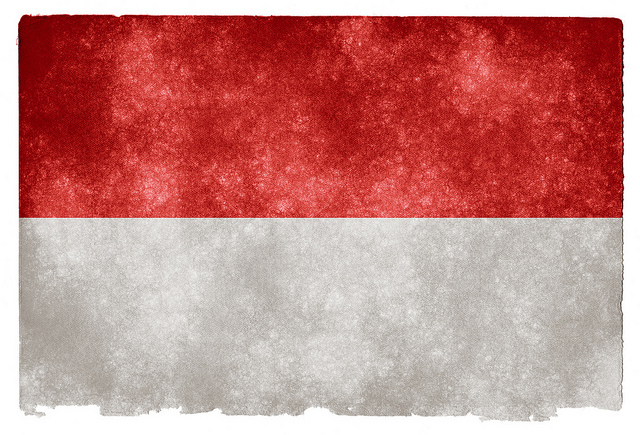
At the two year mark of Indonesian President Joko ‘Jokowi’ Widodo’s time in office, commentators have been quick to criticise the inward turn Indonesia’s foreign policy has taken under his administration. This for a President elected on a platform of ‘expanding Indonesia’s regional engagement in the Indo–Pacific’ (PDF). As President, Jokowi has shown himself to be overwhelmingly focused on a domestic archipelagic development agenda, part of his stated vision of developing Indonesia into a global maritime fulcrum (GMF). However, the gulf between rhetoric and action isn’t just a quirk of Jokowi’s leadership but rather a symptom of Jakarta’s long-standing ‘minimalist’ conception of the Indo-Pacific.
The first Indonesian policymaker to consider the strategic benefits of an Indo-Pacific outlook was Marty Natalegwa, Foreign Minister under the ‘internationalist’ President SBY. Natalegwa penned a response to the new regional construct in 2013, then being promoted by some Indo–Pacific Rim democracies (the United States, Japan, India and Australia). His proposal was for an ‘Indo–Pacific-wide treaty of friendship and cooperation,’ based on the East Asia Summit’s Bali Principles. Rather than undertaking a considerable revamp of Indonesian foreign policy, the Foreign Minister simply sought to apply his existing doctrine, that of a regional ‘dynamic equilibrium’—‘where not one country is preponderant’—to the expanded region. Marty called for an Indo–Pacific (PDF):
‘…marked by an absence of preponderant power not through the rigidity, rivalry and tensions common to the pursuit of a balance of power model. Instead, through the promotion of a sense of common responsibility in the endeavor to maintain the region’s peace and stability.’
For Natalegawa, Indonesia’s interest in the Indo–Pacific was limited to the extent that an expanded region supports its preferred model of an Asia–Pacific order. In that vein, adding a rising India—long seen by Jakarta as a benign power—supports both goals of forging a dynamic equilibrium of inclusive regionalism and a diversity of powers.
On the face of it, the Jokowi administration with its core GMF vision appears to be embracing a holistic conception of the Indo–Pacific. Rizal Sukma, one of the GMF’s key architects, argued that the vision:
‘…emphasises Indonesia’s geographic, geostrategic and geoeconomic realities upon which its future will depend, and simultaneously influences the dynamics in the Indian and Pacific Oceans.’
The GMF envisions Indonesia as a fulcrum: the ‘point of support where the burden of the two oceans actually rest’. It’s objective is for Indonesia to access the full benefits of its geostrategic position.
Two years in, however, there’s little evidence that Indonesia is acting beyond its traditional Asia–Pacific scope. The Indian Ocean Rim Association (IORA), which Indonesia took chairmanship of in October 2015, appears to be the mechanism for a new grand strategy centred on the Indo–Pacific. Indeed, at the time of Indonesia becoming chair there was hope that its proposed IORA Concord might be the first step toward enhanced regionalism in the Indian Ocean.
However after a year of Indonesia’s chairmanship, concrete developments are hard to find. The IORA Concord being drafted for next year’s inaugural IORA Leaders’ Summit is likely to offer little more than ‘bland diplomatic statements that have little restraining force over signatories’ behaviours,’ according to Ristian Atriandi Supriyanto. Jakarta’s interests appear limited to a diplomatic victory for leading on the Concord. There’s no serious suggestion that Indonesia under Jokowi will try to take effective and active leadership over the diverse grouping, as it hasn’t with the more geopolitically pertinent ASEAN.
None of this is surprising, given that the Indian Ocean holds little strategic interest for Indonesia. A stronger position in the Indian Ocean would do nothing to support Jakarta in addressing the strategic challenges it faces. China has contested by force Indonesia’s sovereignty over the Exclusive Economic Zone, and even territorial waters, surrounding its northernmost territory, the Natuna Islands on three separate occasions this year. Beijing has also successfully fractured ASEAN unity—long the cornerstone of Indonesia’s foreign policy—under the leadership of Cambodia in 2012 and more recently Laos. Economically, Indonesia has limited interests to its west; its major trading partners remain overwhelmingly Asia–Pacific.
The relationship between Indian Ocean security and stability and Chinese assertiveness remains tenuous. For Indonesia, India is the only state outside the Asia–Pacific that has the potential to change the strategic balance in East Asia. As such, Indonesia has long welcomed greater Indian engagement in the Asia–Pacific; Jakarta was a key supporter of expanding the East Asia Summit to include India, Australia and New Zealand in 2005.
There’s little reason to think that under Jokowi, Indonesia’s Indian Ocean interests have developed beyond that perceived by Natalegawa and that the Indo–Pacific is perceived to be anything more than the Asia–Pacific + India.
Jokowi’s foreign policy interests are primarily about infrastructure development across the archipelago—key to his re-election bid in 2019—of which Beijing and Tokyo remain Indonesia’s main partners. Indeed Indonesia appears to be playing China and Japan off against each other as a way to maximize their investment potential. Continuing concerns about Chinese assertiveness keep the minimalist logic of the Indo–Pacific alive.

